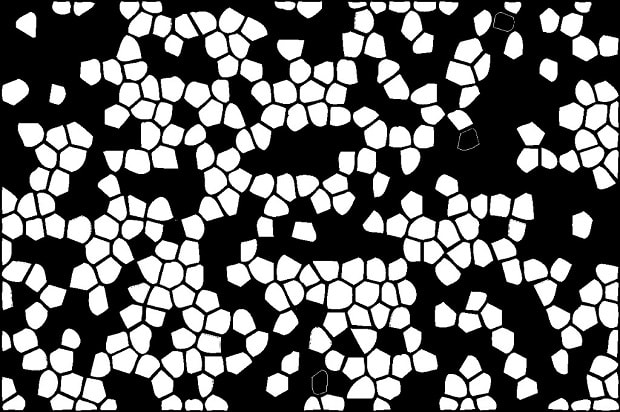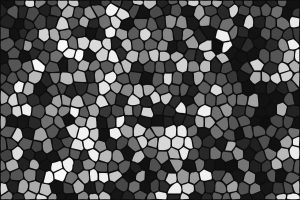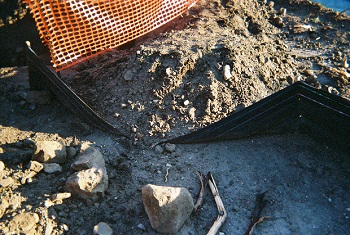
I envy those who aren’t cursed by the need to see the big picture — those who see the world from one perspective in black and white, right and wrong, us and them. Once you begin to realize that much of life is really gray, it’s hard to go back. And it’s uncomfortable as hell.
I first recognized this curse in high school, when I took Debate class and was assigned to a three man team. We were assigned topics, and one person was assigned to argue the pro, one the against, and the swingman (me) had to be able to argue both. I don’t remember what the topics were, other than they had to do with social programs and reforms. Maybe assisted housing and food stamps? (Early 1970s.)
Regardless, I hated being swingman, because I knew the counter-argument to whatever I said. And I learned, A) I never wanted to be a lawyer, and B) the world wasn’t as clearly defined as I had thought.
The Curse Continues
Currently, I struggle with the same big picture/little picture dynamic playing out in our society as a whole and politics in particular. I can’t get on to any bandwagon, because I see too many shades of gray.
On one extreme we have Trump and his tribe, refusing to acknowledge things like climate change and the disparity of wealth with its attendant inequality. And his clear exclusionary stance on so many things.
On the other extreme is Bernie Sanders and his followers, proposing a radical timeline for elimination of fossil fuels and redistribution of wealth methods to pay for it without looking at the broader consequences to the country and world. And many in this camp are also “my way or the highway” in their propositions.

And here I am, asking questions like:
How are you going to power airplanes, ships and heavy trucks which can’t run on biofuel, let alone vehicles where there are no alternatives? And biofuels from soy and corn themselves impact the environment via the growing, harvesting, and conversion processes. Not to mention the loss of native forests to agriculture conversion.
What about all the other “conveniences” sourced from fossil fuels, like medicines, clothes, cell phones and other electronics, and virtually anything made from plastic.
I don’t see any of the Left climate folks giving up their cars, buses, airplanes, coffees and teas (sourced from other countries and transported via fossil fueled ships). How do you think your coconut oil got here?
And what is the Right going to do when Miami, Houston, New York and even Washington, DC find themselves inundated by floodwaters until they are finally submerged? Sure, the rich can move, but what about the workers and industries they built their wealth on?
What about the hidden costs of alternative fuels? Windmill blades, for example, are typically made of fiberglass. The epoxies and resins used to make the fiberglass are — you guessed it — petroleum based. Not only that, but as yet they can’t be recycled and end up in landfills. Are you ready for more clear-cutting in the Amazon to meet demand for biofuels?
So, does that let the fossil fuels industries off the hook? Not at all. What it does mean, is that planners and policy makers need to look at the big picture.
Investors (including anyone with a 401k) need to look at more than their dividends. Corporations need to look at more than the short-term bottom line. And climate activists need to realize that they are as much of the problem as anyone else with their own lifestyle entitlements. Just because someone in NYC or San Francisco is able to take mass transit or ride a bike to work, that doesn’t mean everyone can. And are you aware of how much fuel goes into the growing, harvest and transportation of the cotton you wear? Or the fish you eat?
Life Is Complicated
Let’s consider a few examples from my own life.
There’s a huge stretch of country between the Mississippi River and the Sierra Nevada/Cascades corridor, where distances are greater than most anyone can appreciate if they haven’t lived there.
I’ve had many jobs in this sector that involved car or pickup commutes anywhere from 30 minutes to 2 hours. One way. A 45 minute drive to a bookkeeping job that went through cattle range and turkey bottoms. A 1-1/2 hour commute one way on potholed dirt roads for construction work. There were no options to live closer. Even in many larger cities, mass transit is either non-existent or limited.
My sister has driven mail routes in rural Nevada that service cattle ranches so remote that after she drove 120+ miles to the mailboxes, many of the ranchers had to drive another 20-30 miles themselves to reach the same mailboxes. These folks have to plow their own roads, feed their cattle, mend fences, and they need fossil fuel to do that — there are no alternatives available to them. Even if the whole country went vegan, their high desert land couldn’t support food crops. And a trip to town by horse would take at least 5 days — one way, longer by wagon.
Meanwhile, much of the best land for growing food has been paved over and built on to satisfy the demand for housing. It’s the nature of towns and cities to grow where there are resources, and that is typically where there is arable land. But as those same towns grow, the farm land is sold, subdivided and permanently lost. We’ve come to rely on fertilizers sourced from oil to make the most of what’s left. A complete shift to current organic practices could not compete with current yields. So, who goes hungry?
Then there’s the problem of water. Yes, oil and gas extraction (including fracking) have polluted surface and ground water in many areas. So has any type of mining. And farming. And people by virtue of living life. There’s a lot of money and technological effort that could be turned towards protecting, improving, and repurposing the water we have, but instead we insist on the “right way.” Once again, it gets complicated.
My husband was building a pipeline in New Mexico near the headwaters of a branch of the Canadian River, in the foothills of the Rockies. The environmentalist assigned to the job was a young man just out of university in New York State. He was insisting that a silt fence be installed on the stream sides and stretched across the stream bed at one point, where they had disturbed the soil with the construction. The water level at that point was shallow, only a few inches deep. (A slit fence is a similar to ground cloth, with small holes to allow water through while keeping sediment out.)
My husband tried to explain to him that it wouldn’t work and there were better ways to accomplish the goal of reducing silt damage to the stream. The young man insisted, because “that’s what the book says.”

Within a week a storm came and all the silt fence was destroyed — as my husband predicted. Why?
In arid and semi-arid areas, when it rains it rains hard. The land often can’t absorb much, and all streams, gullies and arroyos are prone to flash floods. Depending on things like slope and volume, a flash flood can easily move boulders weighing a ton or more.
In such areas, straw bales (the rectangular kind you see at a pumpkin patch, or long, round tubes of straw made especially for the purpose) are much more effective than a silt fence. Staked along slopes and across the stream where possible, they slow down the water enough to reduce the silting to near normal levels without being washed away. Where water flows are slower, a silt fence would have worked just fine. But not in this situation. Indeed, in this case, they had to go back and remediate the area with straw bales.
If the young environmentalist had been cursed by looking at the big picture, he could have saved a lot of time and money. But he only saw right and wrong. Yet, what works in one place might not work in another — and vice versa.
There is no economy if there are no people.
Rather than an arbitrary deadline for fossil fuel production and use, how about a graduated approach that is more feasible? Transition the areas where there are already adequate alternatives and the big cities first, and quickly. Instead of massive layoffs, how about diverting some of the manpower and other resources to capturing floodwaters in the Midwest and piping it to the arid southern plains, or even across the Rockies?
Meanwhile, enforce the regulations on the books to cut down on the production byproducts. Don’t make regulations weaker in the name of the economy. The area where I live has a large “spillage” of methane from inadequate or poorly serviced equipment. But there is no incentive to fix it. And while there are areas with problems from fracking, there are others where best practices were followed and everyone has benefited. Husband the precious resource for those things that don’t have alternatives, rather than going for the biggest payoff as fast as possible.
These are just a few ideas. Imagine what could happen if more people seriously looked at the big picture to find solutions instead of defending their entrenched arguments.
We live in a diverse society, and when we begin to tell another group that their community is all wrong, we draw lines of division instead of cooperation. I may not like the way you raise your kids; you may not like the way I worship. You may be vegan, and I may be allergic to grains, but we can both like apples.
The Big Picture
Seeing the big picture means discarding simple, one-size-fits-all approaches. It means having to stop and think. To look at things from another point of view. To acknowledge that sometimes there’s more than one “right way”.
It takes work to think this way. It’s even harder to come up with solutions that benefit the whole instead of just one part of it. But if we are going to succeed in surviving as a species — let alone as a civilization and the society we call America — we need to look at the big picture.
The big picture is a curse, overwhelming us when we want simplicity and kicking us out of our comfort zone. But the big picture is also a blessing, allowing us to look past the pieces of our immediate life to see the beautiful whole of this mosaic we call our world.

I’ve got this same curse, which makes me a great risk manager. I never thought of it as solely big picture thinking or long range impact thinking. In addition to those ideas, I find the way of thinking that you are describing as a ‘gray world’ thinker also imbues values such as problem solving, mediating, empathy, communication, respect, realism, citizenship, balance, curiosity, leadership, wisdom, kindness, service and perhaps most surprisingly – faith.
Totally agree. And don’t forget to add critical thinking to the list. Black and white thinking makes the world so small.